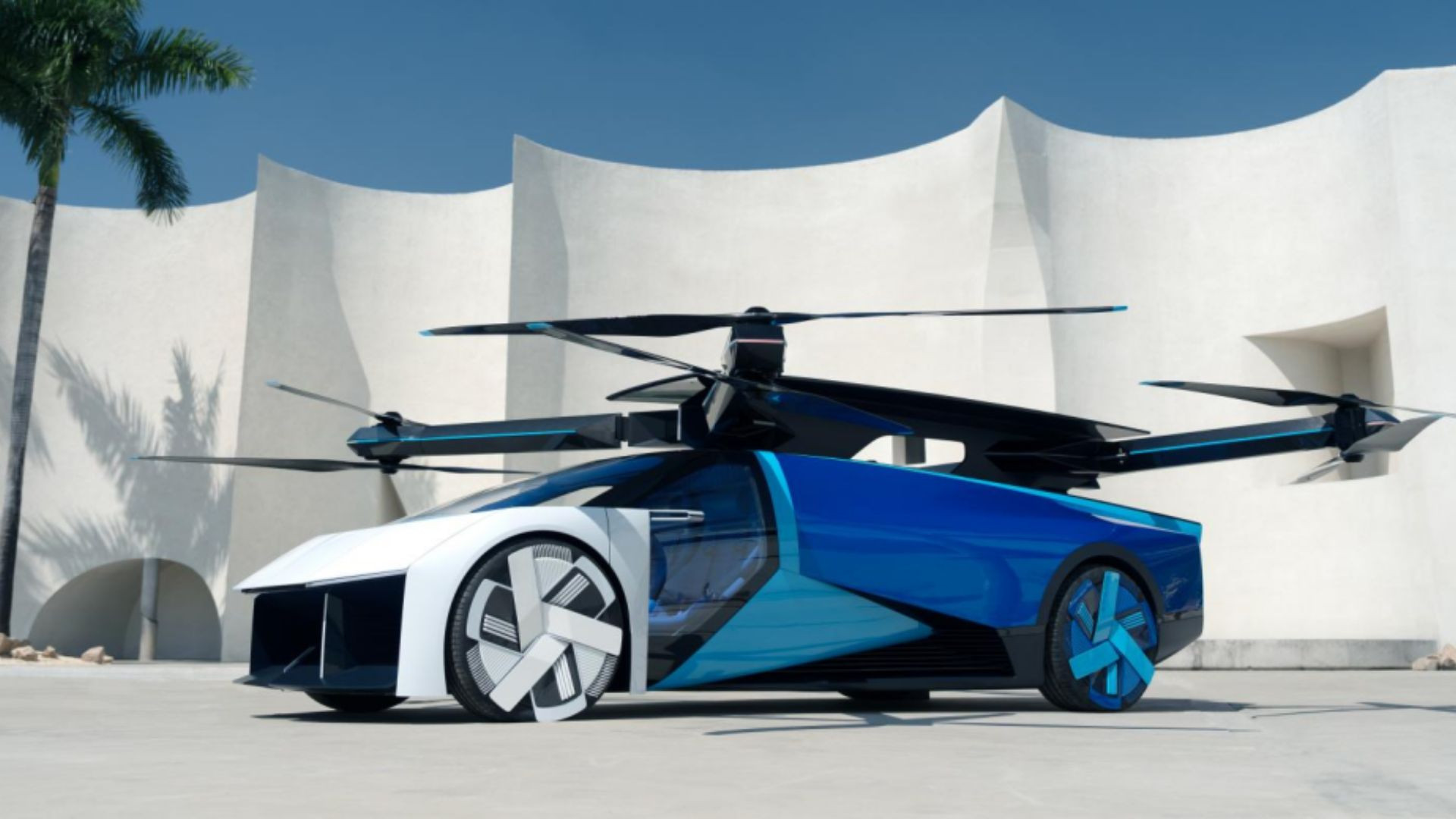beijingwalker
ELITE MEMBER

- Joined
- Nov 4, 2011
- Messages
- 65,187
- Reaction score
- -55
- Country
- Location
Science fiction? China's eVTOL firm unveils "Land Aircraft Carrier" modular flying van
The model features a two-part design that can seamlessly switch between a terrestrial and aerial mode.Jijo Malayil
Published: Oct 31, 2023 08:54 AM EST

Xpeng AeroHT modular flying car application scenarios
In the race to become the front-runners in the electric vertical takeoff and landing aircraft (eVTOL) segment, there has been a growing competition emerging between the West and the rest of the world. One firm making the headlines from the latter is China's Xpeng AeroHT.
The firm showcased a fascinating "Land Aircraft Carrier" modular flying van at the Xpeng Tech Day 2023. The model features a two-part design that can seamlessly switch between a terrestrial and aerial mode.
The air module allows vertical takeoff for low-altitude flights, while the ground module envelops the air module and allows land transportation. The company claims that beyond personal use, the model "holds potential for public services like emergency rescue, effectively catering to both public and private demands," said a statement.
The firm also displayed its newest eVTOL flying supercar design that features a completely concealed airframe.
Impressive on paper
The ground model of the flying van features a design that looks futuristic with its sharp lines and slick surfaces that resemble a "lunar exploration vehicle." Being a concept, the firm says that the final design will be tweaked according to various requirements and limitations.
Xpeng AeroHT modular flying car's ground module
AeroHT
The modular flying car's ground module can accommodate 4-5 passengers and has an extended-range hybrid power system that can recharge the air module several times. The firm says the vehicle has a three-axle, six-wheel structure that allows for 6x6 all-wheel drive and rear-wheel steering, impressive hauling capacity and off-road capabilities.
The air module is an electric-piloted airplane that can take off vertically and fly at low altitudes. To satisfy single-point failure safety criteria, the device features a dispersed electric propulsion system. It enables both manual and automated driving modes, making flying more accessible. A large field of view is provided by the 270° panoramic two-person cockpit, according to AeroHT.
The firm claims that the "automated system streamlines the separation and combination of the air and ground modules just like the Transformers, making flying more accessible and extending the user's travel experience from the ground to the sky," said a statement.
Advanced version
AeroHT also showcased a more evolved version of its flying supercar-like model with additional modifications built within two years of the development of the original concept.
Xpeng AeroHT eVTOL flying car concept
AeroHT
The design features include the ability to fold its manipulator arms, rotor systems, and other flying characteristics that may be folded and stowed within the vehicle with ease. The supercar-inspired design has an intelligent cockpit that effortlessly shifts between land and flight modes, adjusting components like the steering wheel and dashboard to the method selected.
The firm also demonstrated advancements in safety technologies concerning its eVTOL technology at the event. The air module of the newest modular flying automobile has a six-axis, six-rotor layout and two reversible ducts. According to AeroHT, the flight control system can make millisecond-level algorithm modifications in the event of rotor loss, assuring the aircraft's ongoing safe operation.
AeroHT claims that this capability, combined with a thrust-to-weight ratio of more than two, enables the aircraft to retain safe flight even after losing two of its six rotors, satisfying civil aviation's demanding safety criteria.
Further enhancing its safety credentials is its new multi-parachute rescue system, successfully tested at only 160 feet (50 meters) in height in October, servicing needs in ultra-low altitude rescues. The device has a maximum capacity of one tonne and innovative features such as ultra-low altitude parachute opening and an inbuilt safety rescue control panel.
AeroHT claims that it "deviates from industry norms by deploying parachutes at 160 feet (50 meters) rather than the customary more than 650 feet (200+ meters), resulting in a safer landing at around11 mph (5 m/s), safeguarding passengers and the aircraft," said a statement.
The Chinese government is forming more liberal policies concerning eVTOL firms to allow them to further technology development. This practice is being followed in the US and European countries. Helping firms like AeroHT, the Ministry of Industry and Information Technology, in collaboration with the Ministries of Science and Technology, Finance, and the Civil Aviation Administration, recently released a long-term strategy to establish a timetable for developing eVTOLs.

China's eVTOL firm unveils "Land Aircraft Carrier" modular flying van
The model features a two-part design that can seamlessly switch between a terrestrial and aerial mode.
